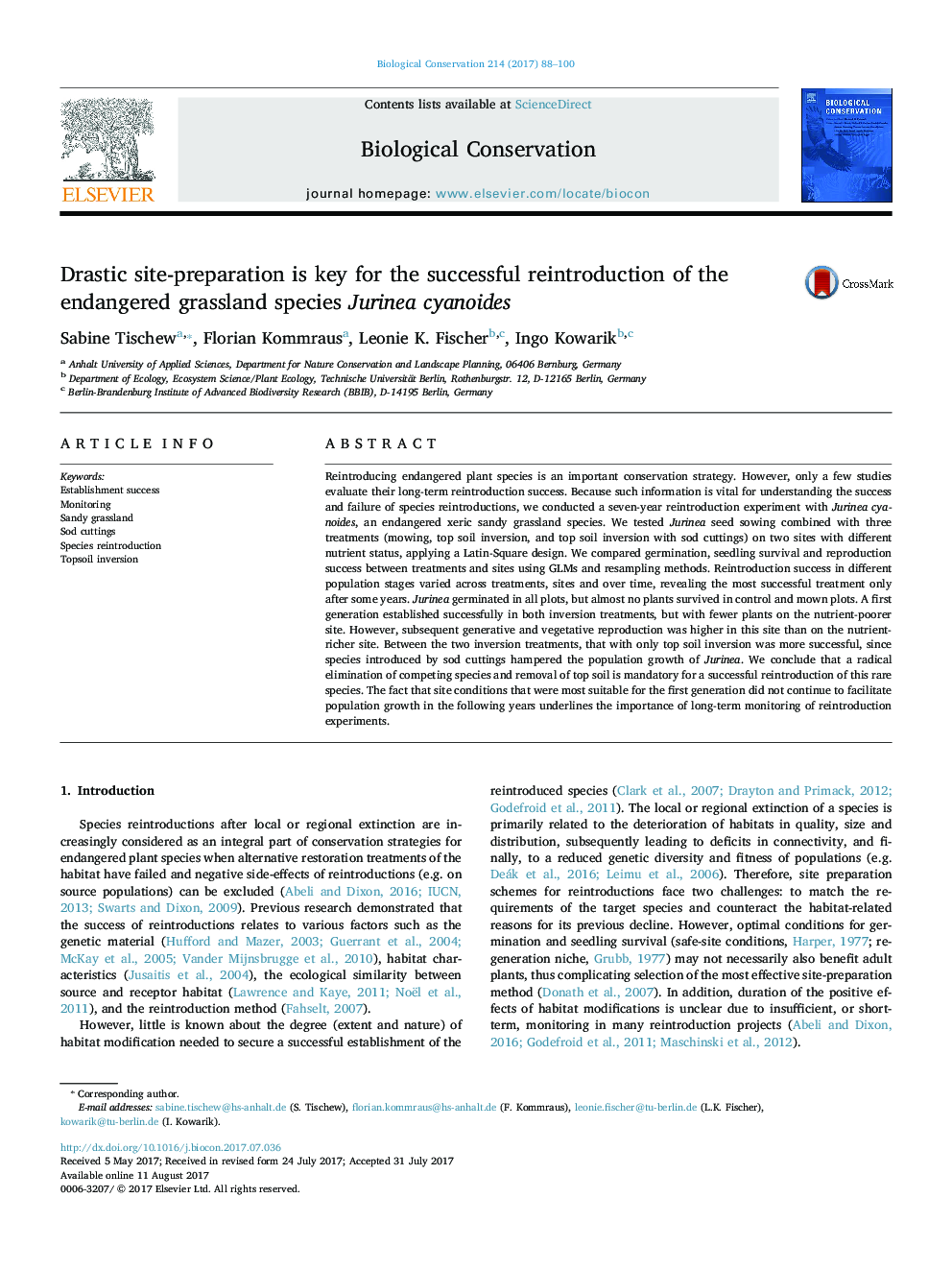| کد مقاله | کد نشریه | سال انتشار | مقاله انگلیسی | نسخه تمام متن |
|---|---|---|---|---|
| 5742937 | 1617891 | 2017 | 13 صفحه PDF | دانلود رایگان |

- Various methods were employed to re-establish a rare, dry grassland plant.
- Topsoil inversion was mandatory for establishing a first Jurinea generation.
- After two years, more plants established on the nutrient-richer site.
- Later, generative and vegetative reproduction was higher on the nutrient-poorer site.
- Addition of other species by sod cuttings did not facilitate Jurinea-reintroduction.
Reintroducing endangered plant species is an important conservation strategy. However, only a few studies evaluate their long-term reintroduction success. Because such information is vital for understanding the success and failure of species reintroductions, we conducted a seven-year reintroduction experiment with Jurinea cyanoides, an endangered xeric sandy grassland species. We tested Jurinea seed sowing combined with three treatments (mowing, top soil inversion, and top soil inversion with sod cuttings) on two sites with different nutrient status, applying a Latin-Square design. We compared germination, seedling survival and reproduction success between treatments and sites using GLMs and resampling methods. Reintroduction success in different population stages varied across treatments, sites and over time, revealing the most successful treatment only after some years. Jurinea germinated in all plots, but almost no plants survived in control and mown plots. A first generation established successfully in both inversion treatments, but with fewer plants on the nutrient-poorer site. However, subsequent generative and vegetative reproduction was higher in this site than on the nutrient-richer site. Between the two inversion treatments, that with only top soil inversion was more successful, since species introduced by sod cuttings hampered the population growth of Jurinea. We conclude that a radical elimination of competing species and removal of top soil is mandatory for a successful reintroduction of this rare species. The fact that site conditions that were most suitable for the first generation did not continue to facilitate population growth in the following years underlines the importance of long-term monitoring of reintroduction experiments.
Journal: Biological Conservation - Volume 214, October 2017, Pages 88-100